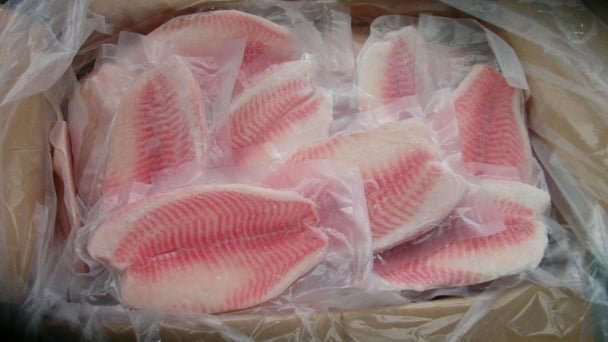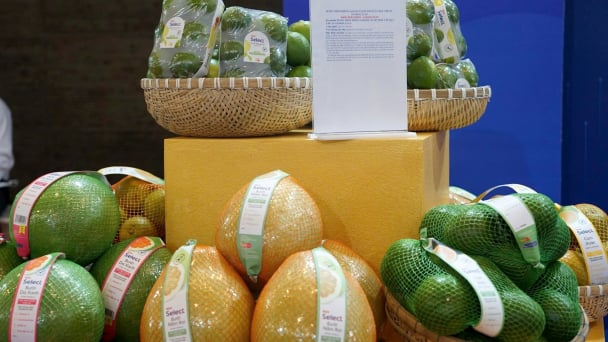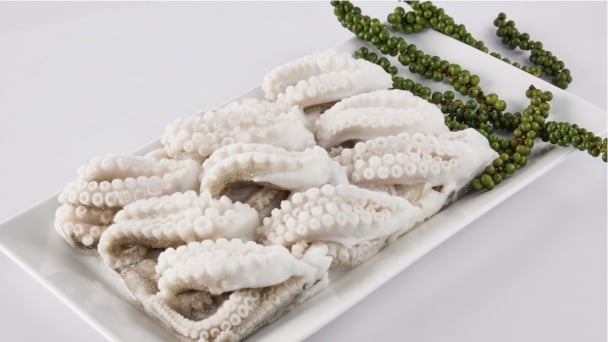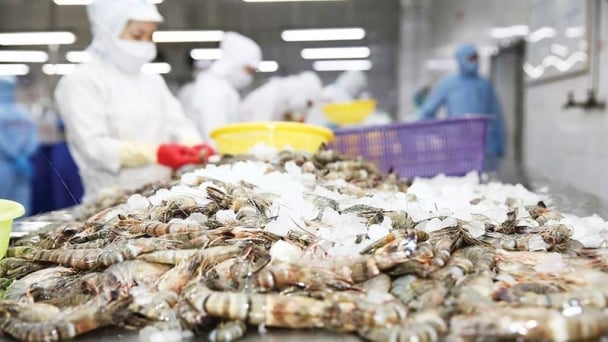July 14, 2025 | 11:20 GMT +7
July 14, 2025 | 11:20 GMT +7
Hotline: 0913.378.918
July 14, 2025 | 11:20 GMT +7
Hotline: 0913.378.918

The British cargo ship Rubymar sank off the coast of Yemen after a Houthi attack. Photo: AFP.
"The maritime sector now faces many challenges such as conflict, threats to maritime traffic, piracy, crime, terrorism, and environmental degradation", Mr. Nguyen Minh Vu, Assistant Minister of Foreign Affairs, speaking at the 12th Sea Dialogue on March 15 in Ho Chi Minh City.
In that context, the world's important lifelines and maritime chokepoints are at risk of becoming geopolitical targets, typically the chaos taking place in the Red Sea, where Houthi forces are located. Yemen is increasing attacks on passing cargo ships to pressure Israel to stop its campaign to attack Hamas in the Gaza Strip.
According to Mr. Vu, despite being far from the Red Sea, Vietnam is being heavily affected by the upheaval in this area, when consecutive raids by Houthi forces have caused cargo ships to be hit by missiles and many vehicles. Others had to switch to a further route, going around the Cape of Good Hope in Africa to avoid risks in the Red Sea.
The True Confidence ship with a crew of 20 people, including 4 Vietnamese citizens, was attacked by Houthi on March 6 on the journey from China to Saudi Arabia, killing four people. Chief Deputy Dang Duy Kien, 41 years old, from Hai Phong, was a Vietnamese citizen who died in the attack.
Houthi missiles on February 18 also hit the British cargo ship Rubymar. All sailors were safely evacuated, but Rubymar sank on the night of March 1, becoming the first ship sunk by Houthi fire in the Red Sea.
After the raids, few cargo ships wanted to continue passing through the Red Sea and the Suez Canal, according to maritime risk analysis firm Windward. On March 7, the International Transport Workers' Federation (ITF) issued a statement calling all cargo ships to redirect to the Cape of Good Hope in Africa because "delivery time is not worth the lives of sailors".
The high risk from Houthi attacks has led to higher insurance premiums and higher energy costs for shipping. According to the Vietnam Maritime Administration, shipping rates from Vietnam to the East Coast of the United States increased from US$ 2,600 per container in December 2023 to US$ 4,100-4,500 in January this year, equivalent to an increase of 58-73%. Shipping rates from Vietnam to Hamburg, Germany tripled.
JP Morgan Research estimates the disruption could increase global commodity inflation by 0.7 percentage points and core inflation by 0.3 percentage points in the first half of 2024.
However, Mr. Nguyen Minh Vu also expressed optimism that the Indo-Pacific region has great potential for maritime connectivity, promising to bring great economic growth.
This area has 7 out of the 10 largest ports in the world and is rich in port development potential, considered a global center for economic growth and technological development. The Indo-Pacific is closely connected by a dense network of submarine cables, the backbone for telecommunications and Internet connections.
Translated by Ha Phuc

(VAN) Correctly identifying and positioning in target markets is key to enhancing the value of Vietnamese seafood and meeting international standards.

(VAN) Although Vietnam’s seafood export revenue in the first half of the year grew by 19%, concerns are mounting about a potential decline in the second half due to tariff pressure from the United States.

(VAN) Electric-powered heavy trucks are rapidly gaining market share in China, driven by subsidies and the quick rollout of chargers, further curbing diesel usage and denting oil demand from the world's biggest crude importer.

(VAN) Many of Vietnam's Halal-certified agricultural products are set to get a greater presence in the Pakistani market due to enhanced bilateral cooperation and initiatives to facilitate trade.

(VAN) Vietnamese fruit exports are currently concentrated mainly in the Chinese market. However, there are many others where local fruits have the potential to expand.

(VAN) Squid and octopus exports have accelerated since the beginning of the year, with expectations to reach the USD 700 million milestone, driven by recovering demand and positive signals from both traditional and emerging markets.

(VAN) Shrimp export growth in May was positive, but businesses are concerned that the recovery momentum in the second half of the year may stall due to uncertainty surrounding U.S. tax policy.